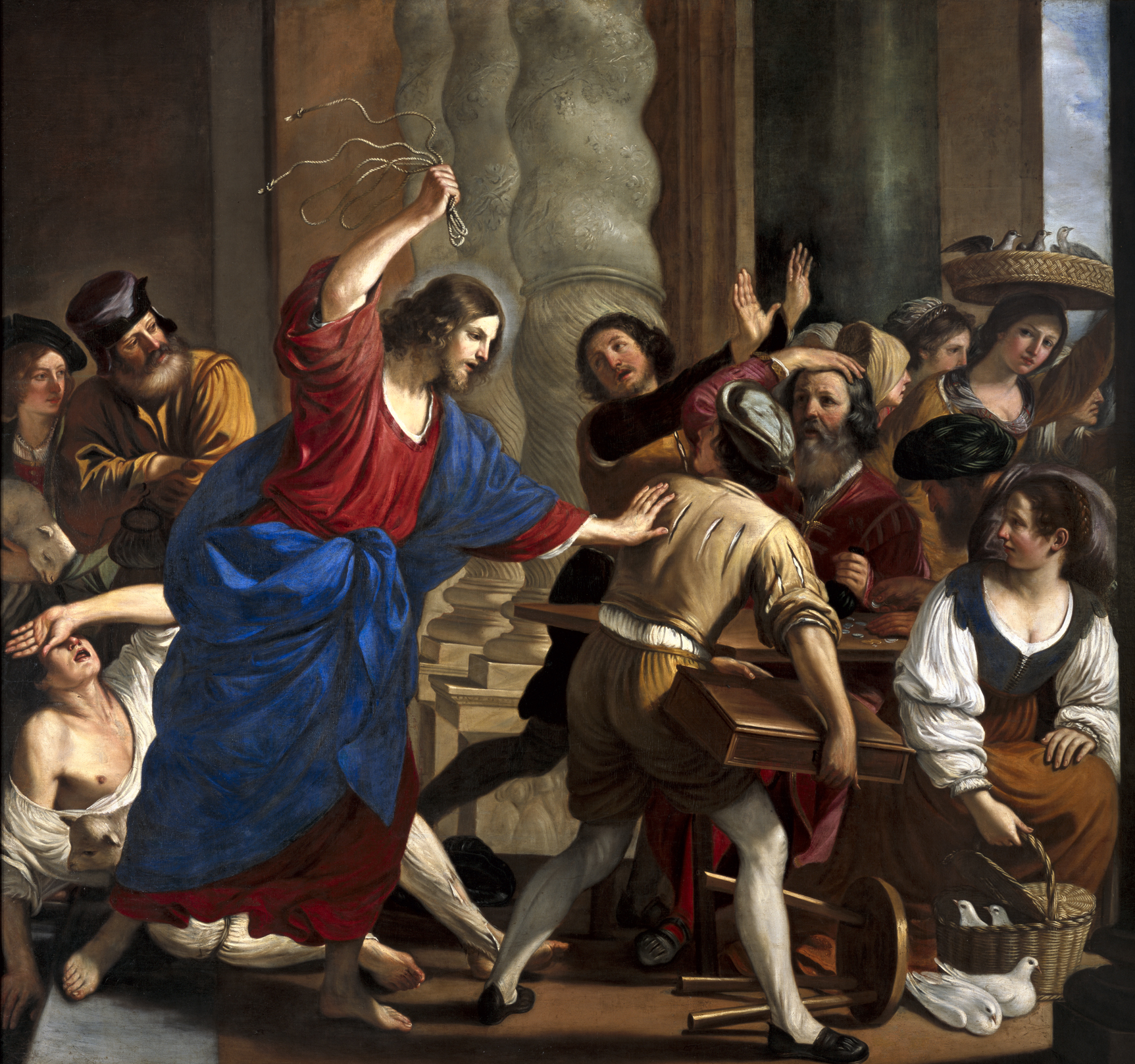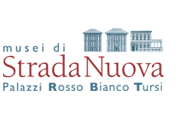
Click here to view image
Christ drives the merchants from the Temple
Maria Brignole-Sale De Ferrari 1874 Genova - donazione
Barbieri, Giovanni Francesco detto Il Guercino
painting
PR 62
Unità di misura: cm; Altezza: 250; Larghezza: 311
olio su tela
GENOVA E GUERCINO. DIPINTI E DISEGNI DELLE CIVICHE COLLEZIONI - GENOVA - 1992<br>Le stanze del Cardinale. Caravaggio,Guido Reni, Guercino e Mattia Preti per il Cardinale Pallotta - Caldarola - 2009
The available documentation provides rather contradictory information regarding the genesis of this painting. On the one hand, the Bolognese historian Carlo Cesare Malvasia (1678) states that it was commissioned from Guercino in 1634 by Cardinal Giovanni Battista Pallotta as a gift to Francesco I d'Este, then Duke of Modena, at the end of his term in Ferrara, but that he did not deliver it and kept it for himself. On the other hand, the artist's account book records the payment received four years later from Antonio Fabri for “the retouching of the pair of Christ driving the merchants from the temple”. did not deliver it and kept it for himself. On the other hand, the artist's account book records a payment received four years later from Antonio Fabri for “the retouching of the pair of Christ driving the merchants from the Temple” to be donated to Pallotta himself, who, at that point, would have owned two almost identical paintings. Beyond the fact that Malvasia may have been mistaken and that the first canvas from 1634 may have actually reached the Duke of Modena (but no similar work appears in the Este inventories), there is little doubt about the direct connection between the subject of the painting and the figure of the cardinal: in fact, the bent rope wielded by Christ in the act of driving out the merchants closely resembles the Pallotta family's heraldic weapon, characterised by a “scourge in the act of striking”. The comparison is so apt that in the cardinal's papers, the work - perhaps only added to his possessions in 1638, thanks to the “retouching” paid for by Fabri? - was curiously recorded under the heading “Flagellum de funiculis”, with a quotation from the Gospel of John (2:15). Equally certain is that the work now preserved in the Strada Nuova Museums was purchased by Gio. Francesco I Brignole-Sale by 1684, from a select group of works that once belonged to Cardinal Pallotta and subsequently, through the marriage of his daughter, passed to her husband, the Bolognese count Gio. Gaspare Grassi. Far from being a mere copy “tout court”, the painting in question therefore seems to be a workshop reworking - the names of Bartolomeo Gennari and Matteo Loves have been mentioned - with the intervention of the master, perhaps limited - also judging by the amount paid by Fabri for the “retouching” - to the execution of the main heads and a few other significant elements. The 2009 restoration also revealed the presence of several layers of paint, some of which, however, can be traced back to the heavy restoration work carried out in the mid-19th century by Giuseppe Isola and documented. (Boccardo 2009, pp. 116-117) According to Turner (2017, pp. 496-497), this may be a classic workshop “sketch”, created in preparation for the main painting, for which the retouching requested by Fabri was intended to fill in the parts that had been left only sketched. The painting depicts Jesus driving the merchants out of the temple.




